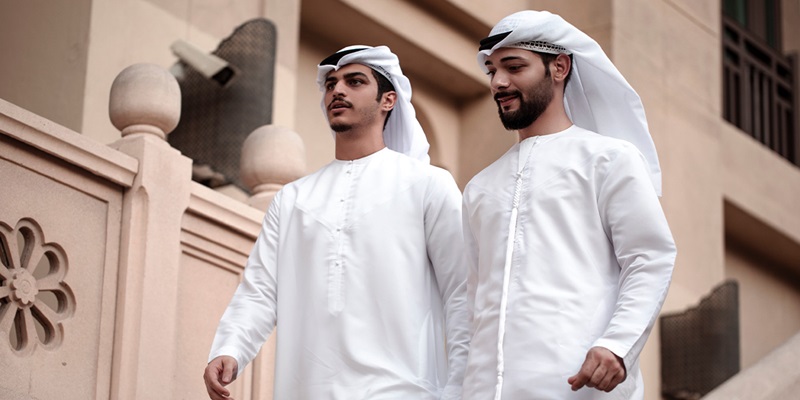Exploring the History and Significance of the Saudi Thobe
Step into the world of tradition and fashion as we delve into the history and significance of the iconic Saudi thobe. From its origins to its modern adaptations, this traditional garment holds a rich cultural heritage that has withstood the test of time. Join us on a journey through the evolution of this timeless piece of clothing and discover why it continues to be a symbol of pride and identity in Saudi Arabia.
Introduction to the Saudi Thobe What is it and why is it significant?
The Saudi Thobe, also known as the Thawb or Dishdasha, is a traditional garment worn by men in Saudi Arabia. It is a long-sleeved, ankle-length tunic that is typically made from lightweight fabric, such as cotton or linen. The word “thobe” comes from the Arabic term “thawb”, which means clothing or garment.
The origins of the thobe can be traced back to ancient Mesopotamia and Egypt, where similar garments were worn by both men and women. However, it was during the rise of Islam in the Arabian Peninsula that the thobe became an important cultural symbol and form of attire for men.
History of the Saudi Thobe Origins and Evolution
The Saudi thobe, also known as the thawb or dishdasha, is a traditional garment worn by men in Saudi Arabia. Its history can be traced back to the 6th century when Islam emerged in the Arabian Peninsula. The thobe has evolved over the centuries to become an iconic symbol of Saudi culture and identity.
Origins of the Thobe
The origins of the thobe can be traced back to ancient Arab cultures, where long and loose garments were worn for practical reasons. These garments provided protection from the harsh desert climate and allowed for ease of movement during daily activities such as riding camels and performing prayer rituals.
Evolution of the Thobe
Over time, different regions within Saudi Arabia developed their own unique styles of thobes based on cultural influences and practical needs. For example, in coastal areas, thobes were made with lighter fabrics such as cotton or linen to combat the high temperatures. In contrast, those living in desert regions favored thicker fabrics like wool for insulation against cold nights.
Modern Era
In recent years, with globalization and modernization taking place in Saudi Arabia, there has been a shift towards more Western-style clothing among younger generations. However, traditional dress remains an important part of Saudi culture and is still widely worn on formal occasions or religious events.
Cultural Significance of the Saudi Thobe: Symbolism and Traditions
The Saudi thobe, also known as the thawb or thobe, is a traditional garment worn by men in Saudi Arabia. It is a loose-fitting, ankle-length robe that is typically made of white cotton or wool fabric. While the thobe may seem like a simple article of clothing, it holds great cultural significance in Saudi Arabian society.
Symbolism of the Saudi Thobe:
The color white, which is the most common color for the thobe, holds symbolic significance in Islam. It represents purity and cleanliness, and wearing a white thobe signifies one’s adherence to Islamic values and principles. White also reflects the harsh desert climate of Saudi Arabia and provides protection from the scorching sun.
Traditions Surrounding the Saudi Thobe:
Wearing a thobe has been an integral part of traditional dress for men in Saudi Arabia for centuries. In fact, it is mentioned in historical texts dating back to ancient times. Today, wearing a thobe remains an important tradition during special occasions such as weddings or religious holidays like Eid al-Fitr or Hajj.
Different Styles and Variations of the Saudi Thobe
The Saudi thobe is a traditional garment that holds significant cultural and historical significance in the Kingdom of Saudi Arabia. Over the years, this iconic garment has evolved in style and design, reflecting the changing times and tastes of its wearers. In this section, we will delve into the different styles and variations of the Saudi thobe and understand how it has transformed over time.
The Traditional Thobe:
The traditional thobe is a long, loose-fitting garment made from lightweight fabric, usually cotton or linen. It features a high collar with no buttons and is worn over an undershirt called a “qamis.” The thobe usually reaches down to the ankles and can be found in various colors such as white, beige, or pastel shades. This style of thobe is commonly worn by older generations or for formal occasions such as weddings or religious events.
Modern Thobes:
As times have changed, so have fashion trends. Today’s younger generation prefers modern versions of the traditional thobe that are more fitted and stylish. These modern thobes come in various designs such as slim-fit, tailored cuts with cuffs on sleeves, embroidered patterns on collars or pockets giving them a more fashionable look while still maintaining their cultural roots.
Regional Variations:
Like any other traditional dress around the world, there are regional variations in the style of Saudi thobes. For example, in northern regions like Hail and Qassim, men wear shorter length thobes with wider collars compared to those living in central regions like Riyadh who prefer longer lengths with narrower collars. Similarly, in southern regions like Asir where temperatures are cooler than other parts of Saudi Arabia; men often opt for thicker fabrics such as wool for their winter attire.
Thobe Styles for Special Occasions:
Different occasions call for different styles of thobes too! For instance, the Eid al-Adha celebration calls for more elaborate designs with intricate embroidery, while the Hajj pilgrimage requires plain white thobes as a symbol of equality and unity among pilgrims. Additionally, during national holidays or events like the National Day, you will see men wearing thobes in green- the color of the Saudi flag, to show their patriotism.
How to Wear a Saudi Thobe: Step-by-Step Guide
The Saudi thobe is a traditional garment worn by men in the Kingdom of Saudi Arabia. It is a long, loose-fitting robe that is typically made of white fabric and worn with a head covering called a ghutra. The thobe has been an integral part of Saudi Arabian culture for centuries, and it continues to be an important symbol of national identity.
Step 1: Choosing the Right Thobe
Traditionally, thobes are made from lightweight cotton or wool fabrics to combat the extreme heat in Saudi Arabia. However, nowadays there are many options available in terms of color, fabric, and design. You can choose from different colors such as off-white, beige, light blue or gray. Some thobes also feature intricate embroidery work on the cuffs and collar.
Step 2: Preparing Your Thobe
Before wearing your new thobe, it is essential to wash it first. This not only ensures cleanliness but also helps soften any stiff fabric and makes it more comfortable to wear. Ironing your thobe afterwards will give it a crisp look.
Step 3: Putting on the Thobe
To put on your thobe correctly, begin by pulling it over your head like a t-shirt. Make sure that the neck opening sits comfortably around your neck without being too tight or too loose. Next, adjust the length so that it reaches just above your ankles.
Step 4: Folding the Sleeves
The sleeves of a thobe are usually quite long and wide which can make movement difficult if left unaltered. To solve this issue fold up each sleeve twice at elbow length until they reach just above your wrist.
Step 5: Tying Your Ghutra (Head Covering)
Place your ghutra over your head with one corner hanging down to your chest and the other over your shoulder. Then, take the longer end and fold it in half so that it forms a triangle shape. Place the folded edge at the back of your head and bring the two ends forward, crossing them under your chin. Secure the ghutra in place with an agal (a black cord used as a headband).
Step 6: Finishing Touches
To complete your thobe look, you can add a bisht (a long cloak) on top for more formal occasions or opt for sandals or traditional slippers called babouche.
Modern Adaptations and Influences on the Traditional Saudi Thobe
The traditional Saudi thobe, also known as the thawb or dishdasha, has been a staple in Saudi Arabian fashion for centuries. However, with the rise of globalization and Western influences, modern adaptations have emerged that have transformed this traditional garment into a more versatile and contemporary piece of clothing.
One of the most notable modern adaptations to the Saudi thobe is the use of different fabrics and colors. While traditionally made from white or off-white cotton fabric, modern versions can now be found in a variety of colors such as black, blue, grey, and even printed designs. This allows for greater personal expression and caters to individual preferences. Additionally, different types of fabrics such as linen, silk, or synthetic blends are now used to make thobes that are suitable for various occasions and weather conditions.
Another significant influence on the traditional Saudi thobe is Western fashion trends. In recent years, there has been a growing trend towards slim-fit and tailored clothing styles. This has been incorporated into the design of modern thobes with slimmer cuts and more structured silhouettes. Some designers have even introduced western elements such as collars or button-down closures to create a fusion between traditional Arab attire and contemporary western style.
Furthermore, many modern adaptations have focused on adding functionality to the classic design of the Saudi thobe. For example, some thobes now feature pockets which were not traditionally included in its design but add practicality for everyday wear. Some designers have also incorporated zippers instead of buttons for easier wearability.



